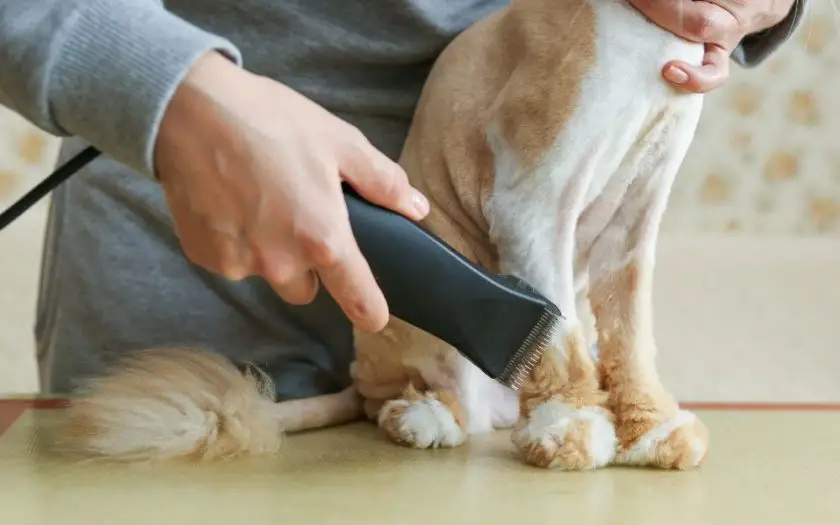Cats are excellent at grooming. In fact, you’ll be hard-pressed to find an animal species on our planet that takes better care of themselves. But even the neatest creatures need a little helping hand every once in a while. So why do cats need to be groomed, and what are the benefits of a good routine?
Brushing, trimming and bathing all help to make your cat look more presentable. But there are potential health benefits too! A well-groomed cat sports a shiny coat, has fewer mats, and is less likely to be coughing up hairballs. You’ll also find it easier to check for ticks, fleas, and other problems that you could otherwise potentially miss.
#1: Brushing
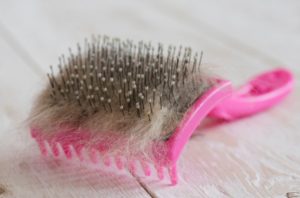
When we’re on the topic of grooming, a good old brush is probably the first thing that comes to your mind. Brushing is beneficial for several reasons:
- It removes loose hairs and dirt from the coat. Since these would otherwise be licked up by your cat, brushing is a good measure towards preventing hairballs.
- less hair flying around the house also means sensitive people don’t get their allergies triggered, and you’ll spend less time plucking hairs off your couch!

How to brush?
Most cat breeds just need a good brush over twice a week to remove loose hair. Always brush in the direction of the hair, starting with the neck as many cats don’t mind being fussed and brushed here. The back and tail base will probably be fine, too. Once you get to the sides and tummy, your cat might become a bit upset. Watch for signs that they’re unhappy, and be prepared to withdraw if necessary.
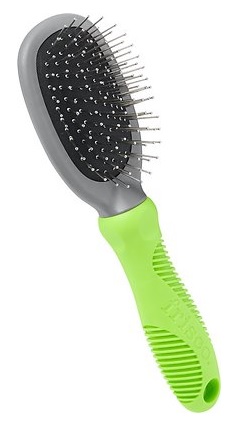
The tools of the trade
Whilst there are special brushes for cats, a sweaty palm or latex glove are also good options, as these ‘catch’ the loose hairs and gently pull them. Rubber mitts for grooming cats also work well, and there is a range of brushes available.
For longer-haired cats, a slicker brush or pin brush are both good options for grooming the tangles out of a long coat. De-matting brushes are also available.
Brushing a matted cat
If your cat has got matted, or you’ve just taken in a stray, you’ll need to get the matts out as soon as possible. Matted fur pulls at the skin and causes pain, as well as increases the chance of infections.
Whilst you might be able to get the matts out with a de-matting brush, be aware that they are likely to be very uncomfortable, especially if you pull and tug at them. It might look messy, but the best bet is usually to clip the matts off. You can buy clippers, ask the vet to help, or book them in for sedation and a shave.
#2: Bathing
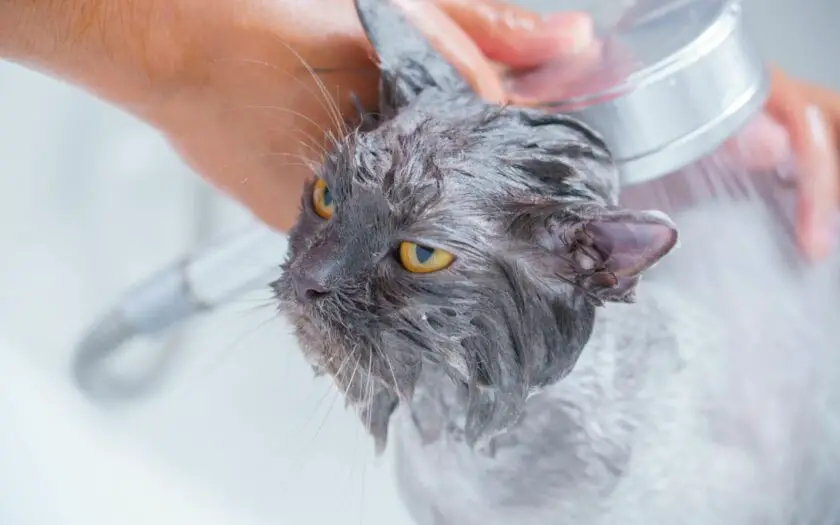
A question we get sometimes is “how often should I bathe my cat?”. You might be surprised to hear that the answer is “probably never!” Most cats will happily go their whole lives without a bath, and never suffer any adverse effects. However, there are certain situations where a bath is required.
For instance, cats with certain skin conditions may be prescribed medicated shampoo. Cats that have toxins or sticky substances like motor oil on their fur may also require a good bath to reduce the chance of them licking it off. Finally, senior cats, disabled cats, or young kittens may need one if they’re unable to groom themselves or suffering from a bout of diarrhea.
How to bathe a cat?
When it comes to bathing your cat, you’ll need to use a cat-specific shampoo. Ideally, one recommended by your vet is best. Try to make the water slightly warmer than you would a baby’s bathwater – cats run at a higher body heat than us, so the bath will feel cooler to their skin. I usually recommend 38-39C (100-102F) as a good temperature for a cat. Don’t run the bath too deep – no deeper than their elbows.
Gently pour or spray water over your cat until their fur is wet through, then lather the shampoo, following any instructions from your vet. Most shampoos will need leaving for a while before you rinse them off, so check the product packaging if you aren’t sure. Don’t forget to dry your cat thoroughly after a bath, as they can quickly get cold!
An alternative to bathing
If your cat hates baths with a vengeance, you may be able to manage with a damp cloth. Again, make sure the water is warm, and carefully run this over your cat’s coat in the direction of their fur. Since this is a lot more like normal grooming, most cats will tolerate this very well.
#3: Shaving
Shaving is a type of grooming that certain breeds may occasionally need. Some owners also shave their cats not out of necessity, but rather to go for a particular ‘look’, which is mostly seen with show cats. Others may need shaving because they get too hot or have matts. Some cats with long fur may struggle with properly grooming themselves and resist regular grooming from pet parents, which means keeping them shaved is necessary to prevent painfully matted fur.

#4: Nail trimming
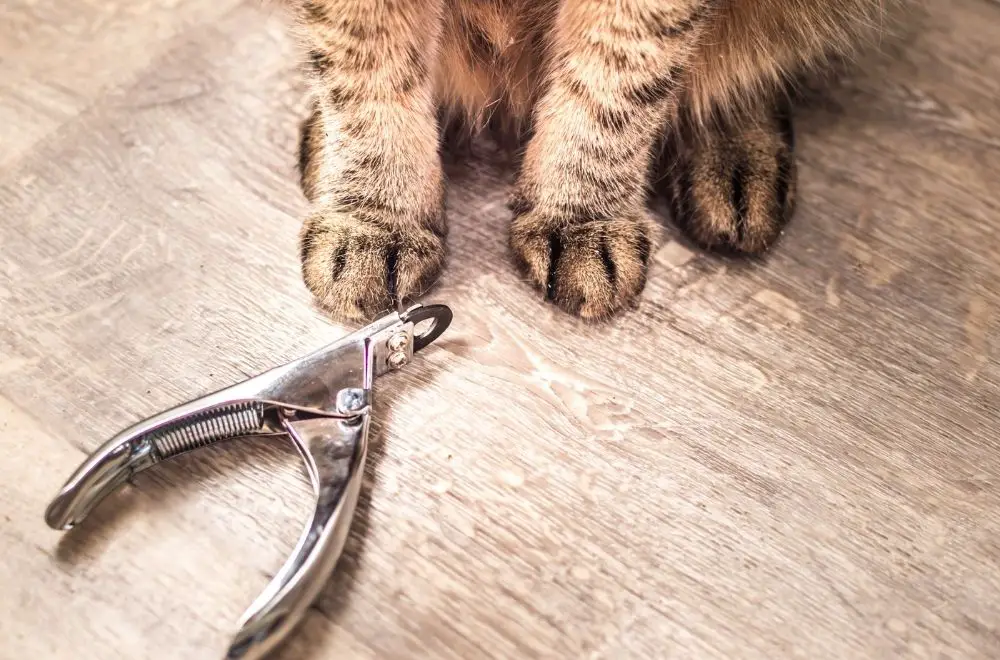
Nail trimming is an important part of your cat’s grooming routine. Not all cats need their nails done, as cats should naturally wear their nails down on their own. However, indoor cats and senior cats may need their nails done frequently. Regardless of how often your cat goes outside, it’s important to check them regularly for signs that your cat needs their nails trimming.
You can do this by looking at your cat’s feet when they’re standing – can you see the nails even when retracted? If so, they probably need their nails trimming. You can also press gently on the top and bottom of your cat’s food to extend their nails, and look at how much nail is visible past the pink quick. If it’s more than 5mm or is curling excessively, it’s time to trim your cat’s nails! If you see the nail curving over and into the pad, it’s best not to trim it yourself – your vet will be able to do this for you and treat any infection from the nail digging into the paw.
Related: What happens when you don’t trim your cat’s nails?
How to trim nails:
As with anything feline, ‘go slow to go fast’ is a good tip. In other words, don’t push ahead and stress your cat out and end up in a battle of wills. You’ll only increase the risk of injury and make it harder next time. Even if you only get one nail done at a time, it’s better not to stress your cat. Choose a time to clip your cat’s nails when they’re calm and quiet. A second pair of hands can make holding them still easier.
Trim only the white portion of your cat’s nails. If you cut the pink ‘quick’ it will bleed. Your cat will also react painfully, as this is where all the nerves are in the nail. For outdoor cats, only trim the ends of the nails or any part that’s curving excessively – your cat needs their nails to defend themselves as well as to climb, so it’s important they’ve got sufficient nail to do this with.
When cats stop grooming themselves
Sometimes, cats will stop grooming themselves. This is a sign of a health problem as even geriatric cats should be able to groom. Possible reasons for a cat not grooming themselves properly include arthritis, obesity, hyperthyroidism, and kidney disease. Because so many conditions can cause a cat to stop grooming themselves, it’s a good idea to book a vet visit as soon as you notice a problem.
A good clinical examination by your veterinarian will be able to rule out many of these causes, and some simple tests will be able to rule out others. Once the underlying cause of your cat not grooming is treated, they’ll quickly get back to their clean habits!

